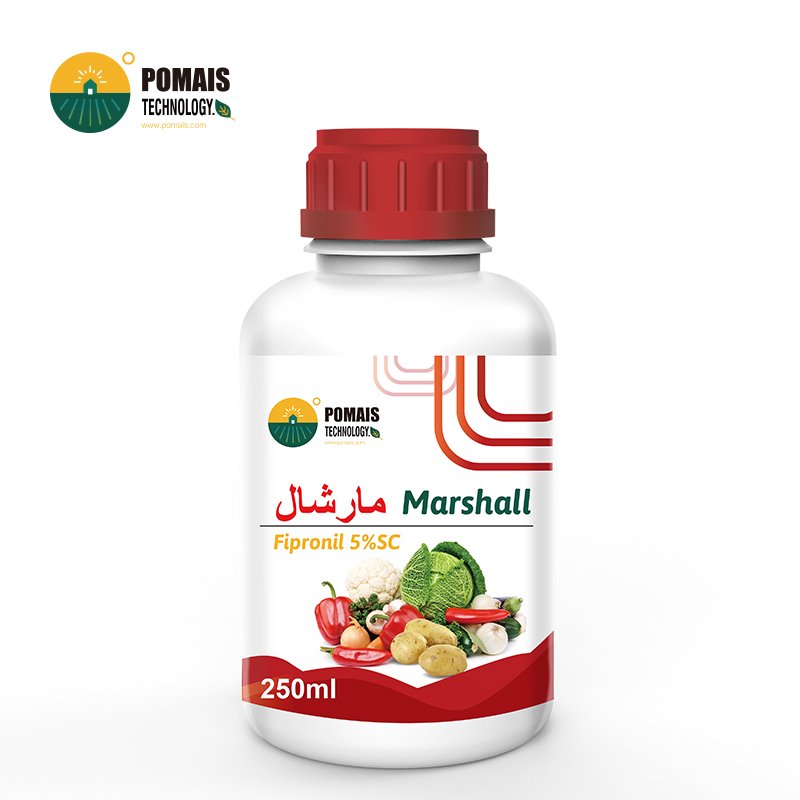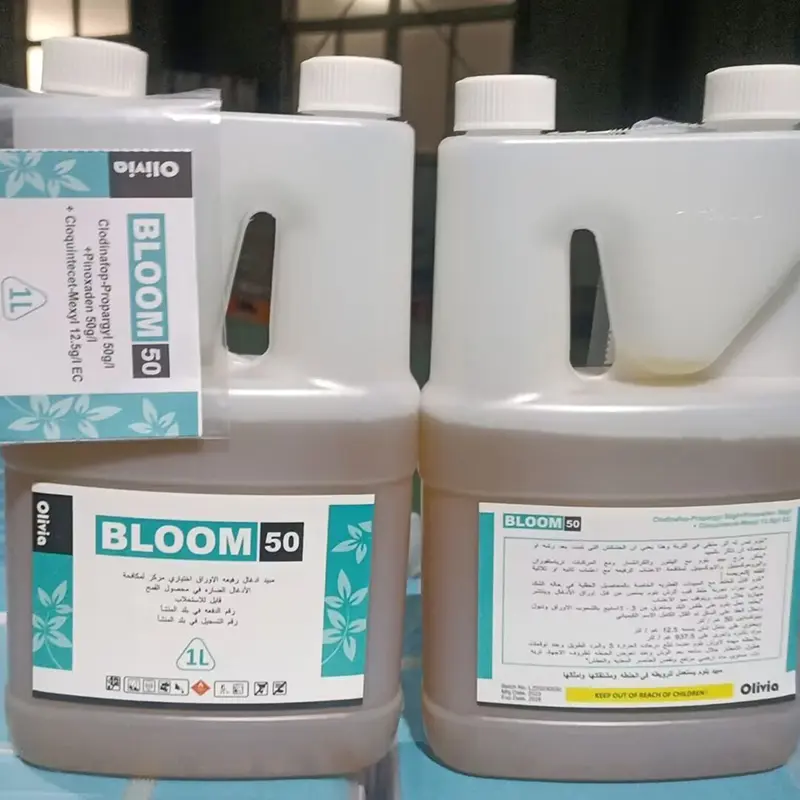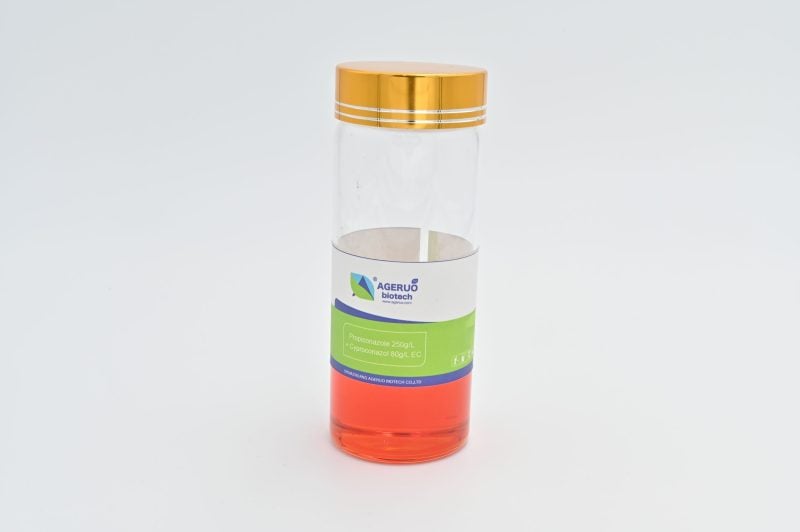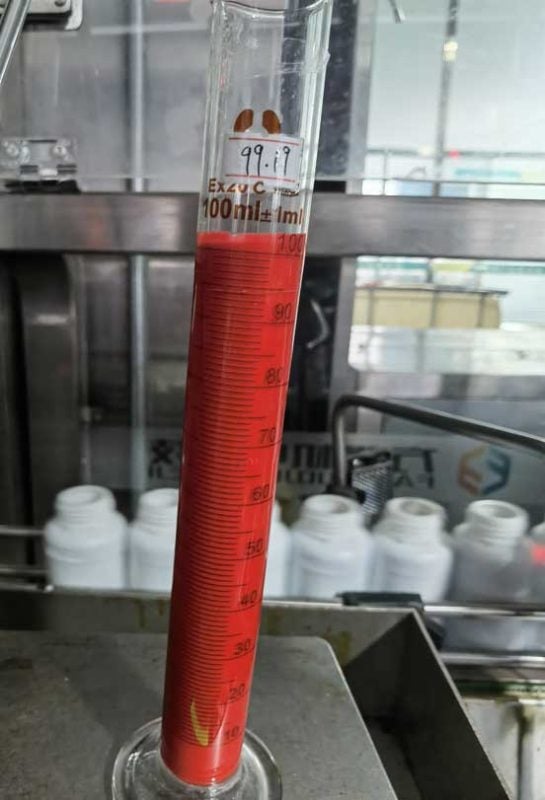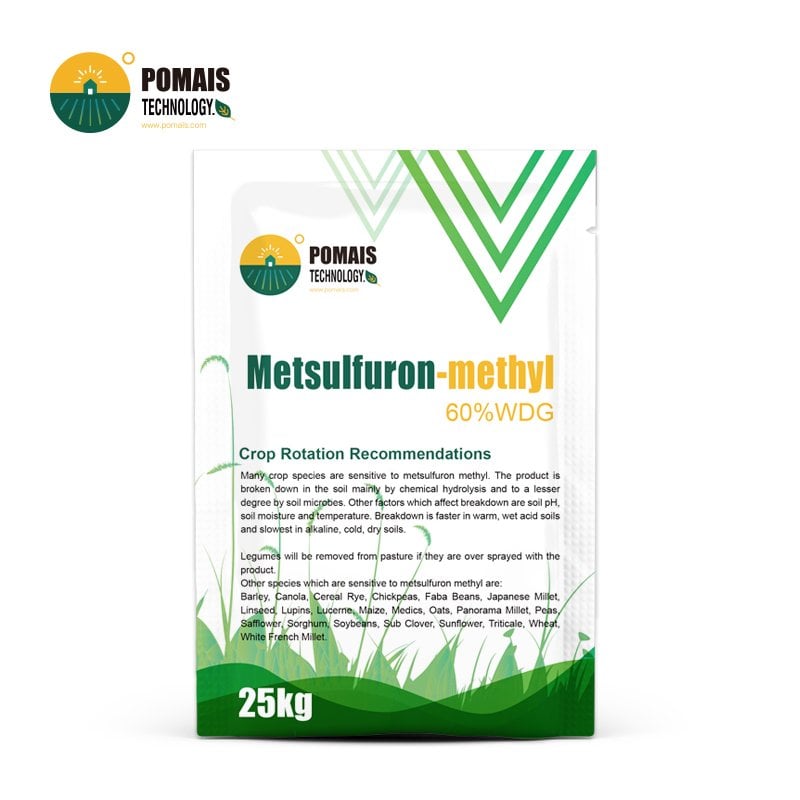Fipronil Insecticide Products | Pesticide Termiticide
Fipronil is a highly effective broad-spectrum insecticide and termiticide used to control a wide range of insects, including ants, termites, cockroaches, fleas, ticks, and beetles. It belongs to the phenylpyrazole class of insecticides and is known for its long residual activity and effectiveness in controlling pests in both agricultural and structural settings. Fipronil works by disrupting the central nervous system of insects, causing paralysis and death.
- Designed for Professional Buyers & Bulk Orders
- This product is available for business purchase and large-scale distribution.
- We support custom packaging, labeling, and formulation to meet your market needs.
- Let’s build your brand together.

About Fipronil Insecticide Products | Pesticide Termiticide
About Fipronil Insecticide Products | Pesticide Termiticide
| Product Name | Fipronil (insecticide/termiticide) |
| Active Ingredient | Fipronil |
| CAS Number | 120068-37-3 |
| Molecular Formula | C12H4Cl2F6N4OS |
| Target Pests | Termites, ants, cockroaches, fleas, ticks, and other insect pests |
| Applicable Crops/Uses | Rice, corn, sugarcane, turfgrass, non-crop areas, termite control |
| Dosage | Varies based on application: typically 50-100 ml/acre for agriculture and 10-25 ml for termite control |
| Mode of Action | Non-repellent, systemic insecticide; disrupts the insect’s central nervous system by blocking GABA-gated chloride channels |
| Tank Mix Compatibility | Can be mixed with other insecticides and pesticides for enhanced pest control |
| Common Formulations | Suspension Concentrate (SC), Wettable Powder (WP), Granules (GR) |
| Common Concentrations | 25g/L EC, 30g/L EC, 40g/L SC, 50g/L SC, 75g/L SC, 7%SC, 20%SC, 80%WDG, 0.01%gel, 0.05%bait, 95%TC |
| Packaging Types | 100ml, 500ml, 1L bottles for SC |
| Product Keywords | Fipronil insecticide, Fipronil termiticide, Fipronil pesticide, Fipronil products |
| Company Strengths | POMAIS offers highly effective insecticides for agricultural and non-crop uses, supports OEM/ODM services, and provides tailored packaging and labeling solutions for global markets |
Our company specializes in the production of high-quality insecticides and termiticides, including Fipronil-based products. We offer custom packaging and label design services, backed by ISO 9001 certification and a strong commitment to product quality and innovation.
Fipronil insecticide
POMAIS Fipronil insecticide is a powerful, broad-spectrum solution for controlling a variety of pests in crops like canola, rice, sorghum, and sunflower. With no withholding period when used as directed, Fipronil ensures effective pest control without compromising harvest quality. Follow safety and storage instructions to maintain product effectiveness and environmental safety. Available in customizable packaging options for agricultural and non-agricultural use.
Mode of Action
Fipronil is a non-systemic insecticide that works by blocking the GABA-gated chloride channels in the insect’s nervous system, causing hyperexcitation of nerves and muscles. This leads to paralysis and death of the insect. It is effective in targeting both adult and larval stages of pests. Fipronil is used in soil treatments, seed treatments, baiting systems, and foliar applications.
Applications
| Crops/Areas | Target Pests | Rate/ha | Critical Comments |
|---|---|---|---|
| Cereals, Corn, Soybeans | Cutworms, rootworms, aphids, beetles | 100-200 ml/ha | Apply as a foliar spray or soil treatment at early crop stages. Reapply as necessary depending on pest pressure. |
| Rice | Stem borers, leafhoppers, planthoppers | 150-300 ml/ha | Apply at the first sign of pest activity. Ensure even coverage for effective control. |
| Termite Control | Subterranean termites | 0.5% dilution (termiticide) | Apply around foundations and soil in building construction for termite prevention. |
| Urban Pest Control | Cockroaches, ants, fleas, ticks | 0.05-0.1% dilution | Use in bait stations, sprays, or granules for indoor and outdoor pest control. |
Benefits
- Broad-Spectrum Control: Effective against a wide variety of insect pests, including termites, ants, fleas, and agricultural pests.
- Non-Systemic Action: Fipronil acts on the nervous system, leading to quick paralysis and death of the targeted pests.
- Residual Activity: Provides long-lasting control in soil and bait applications, making it ideal for termite control and agriculture.
- Versatile Use: Applicable in both agriculture and urban pest management, including termite prevention in buildings and structures.
Related Mixed Insecticides
- Fipronil + Imidacloprid: Combines the effects of two powerful insecticides, offering broad-spectrum control of sucking and chewing pests in crops and urban settings.
- Fipronil + Bifenthrin: Used for soil treatments and urban pest control, providing enhanced control of termites, ants, and other insects.
Application Rates and Usage
- Cereals, Corn, Soybeans: Apply 100-200 ml/ha as a foliar spray or soil treatment to control pests like cutworms and aphids. Reapply depending on pest population.
- Rice: Use 150-300 ml/ha to protect against stem borers and leafhoppers. Best applied preventively or at the first sign of infestation.
- Termite Control: Dilute 0.5% for use as a termiticide in soil treatment around buildings and construction sites.
- Urban Pests: Use 0.05-0.1% dilution for the control of ants, cockroaches, and fleas in both indoor and outdoor environments.
Always follow product label instructions for specific application rates and pest targets.
Packaging Options
- Bulk Packaging: Available in 200L drums, 1000L IBC containers for large-scale use in agriculture and urban pest management.
- Small Packaging: Available in 5L, 1L, and 500ml bottles for ease of use in residential and commercial pest control applications.
Why Choose POMAIS for Fipronil Products?
At POMAIS, we are committed to providing high-quality, effective pest control solutions. Our Fipronil-based insecticides and termiticides are designed to meet the needs of agricultural and urban pest management. We offer customized packaging solutions, including private labeling, and we provide comprehensive technical support to ensure successful pest control. Our products are ISO 9001 certified and meet the highest standards of quality and safety.
Contact Us Today for a Customized Quote
Whether you are looking for a solution to protect your crops or eliminate termites in your building, POMAIS offers tailored solutions that meet your unique needs. Get in touch with us today for more information and a personalized quote.
Fipronil Spray/Termiticide/Ant Bait Killer
| Formulation | Target Pests | Application Method |
|---|---|---|
| Fipronil Spray | Termites, ants, cockroaches, fleas, ticks | Surface spray, crack and crevice treatment |
| Fipronil Termiticide | Subterranean termites, drywood termites | Soil treatment, trenching, perimeter treatment |
| Fipronil Ant Bait | Ants (including fire ants, Argentine ants) | Bait stations, granules |
| Fipronil Granules | Lawn pests (mole crickets, chinch bugs, etc.) | Broadcast on turf, soil incorporation |
Fipronil Spray
Fipronil spray is commonly used for controlling termites, ants, cockroaches, and other crawling pests in residential and commercial settings.
- Target Pests: Termites, ants, cockroaches, fleas, ticks, and other household pests.
- Application Method: Fipronil spray is applied as a surface spray or crack and crevice treatment in and around structures. It can be sprayed on walls, floors, or foundations to provide long-lasting protection against crawling pests.
- Use Rate: Apply at 0.5-1.0 liters per 100 square meters for surface treatments. Follow product label instructions for specific application rates based on the pest and location.
Fipronil Termiticide
Fipronil is a popular termiticide used for preventing and controlling subterranean termites and drywood termites. It is effective in both pre-construction and post-construction treatments.
- Target Pests: Subterranean termites, drywood termites, dampwood termites.
- Application Method: Applied as a soil treatment around the foundation of buildings to create a chemical barrier against termites. In post-construction treatments, Fipronil can be used in trenching or perimeter applications to treat existing termite infestations.
- Use Rate: For termite control, apply 1.0-1.5 liters per 100 square meters in trenching applications or around the foundation of structures.
Fipronil Ant Bait Killer
Fipronil ant bait is specifically designed to control ant colonies by targeting worker ants that carry the bait back to the colony. It offers delayed toxicity, allowing the ants to share the bait with other colony members, including the queen.
- Target Pests: Fire ants, Argentine ants, carpenter ants, sugar ants, and other household ants.
- Application Method: Fipronil ant baits are applied in bait stations or as granules. The ants feed on the bait and carry it back to the colony, where it is shared, leading to the elimination of the entire colony.
- Use Rate: For granular baits, apply 1-2 kg per hectare around ant trails or nesting areas. For bait stations, place them in areas of high ant activity.
Packaging Types
- Liquid Concentrates (SC/EC): Available in 500 ml, 1L, and 5L containers for spraying and soil treatments.
- Granules: Available in 5 kg, 10 kg, and larger bulk packages for lawn and perimeter pest control.
- Ant Bait Stations: Packaged in small bait containers for indoor and outdoor ant control.
- Aerosol Spray: Available in 300 ml and 500 ml cans for spot treatments and household pest control.
DIRECTIONS FOR USE
| CROP | PEST | STATE | RATE | CRITICAL COMMENTS |
| Canola | Redlegged earth mite (Halotydeus destructor) | Qld, NSW, Vic, SA, WA only | 400 mL/100 kg seed | Ensure thorough coverage of seed. Add 400 mL of product to 600 mL of water/100 kg seed (total volume 1.0 L /100 kg seed). Seedling protection will be satisfactory under conditions of low pest pressure (ie. less than 1000 perm2). Where greater pest numbers are anticipated or where there are more than 8 mites per plant, alternative or additional treatments will be required. |
| Rice | Bloodworm(Chironomus spp.) | NSW, Vic, WA only | 20 mL/100 kg seed or 25 mL/ha | Apply as aspray to seed prior to sowing. |
Fipronil FAQ
- What is fipronil?
Fipronil is a broad-spectrum insecticide used to control a variety of pests. - What is fipronil used for?
It is commonly used to control fleas, ticks, ants, termites, and other insects. - How does fipronil work?
Fipronil disrupts the nervous system of insects by blocking GABA receptors, leading to paralysis and death. - How effective is fipronil?
It is highly effective against a range of pests and provides long-lasting protection. - Is fipronil toxic?
Fipronil can be toxic to pets and humans if ingested or improperly applied, and should be handled with care. - Is fipronil safe for cats?
It is safe when used according to the product instructions, but overuse or ingestion can be harmful. - Is fipronil safe for dogs?
Yes, when used correctly, it is commonly used in flea and tick treatments for dogs. - Is fipronil safe for humans?
It can be harmful if ingested or if there is prolonged skin exposure, so handling instructions must be followed. - Is fipronil toxic to dogs if ingested?
Yes, ingestion can lead to toxicity and require immediate veterinary care. - Is fipronil toxic to cats?
Yes, improper dosage or ingestion can be toxic for cats. - Is fipronil toxic to humans?
It can be harmful if inhaled, ingested, or absorbed through the skin. - Can fipronil cause seizures in dogs?
In some cases of overexposure or ingestion, fipronil has been associated with seizures in dogs. - Is fipronil dangerous to humans?
Yes, it can be dangerous if misused, leading to symptoms like nausea, dizziness, or skin irritation. - Is fipronil safe for pregnant dogs and puppies?
Consult a vet before using fipronil on pregnant dogs or puppies, as it can be risky in certain cases. - What insects does fipronil kill?
It kills a variety of pests, including fleas, ticks, ants, termites, cockroaches, and beetles. - Does fipronil kill fleas and flea eggs?
Yes, it effectively kills adult fleas, but it may not be as effective on flea eggs. - Does fipronil kill ants, termites, and roaches?
Yes, it is commonly used for controlling ants, termites, and cockroaches. - Does fipronil kill bed bugs?
Fipronil is not typically used to treat bed bugs, but it may have some effect. - Does fipronil kill spiders, mosquitoes, and wasps?
It can kill spiders and some other insects but is not highly effective against mosquitoes and wasps. - Does fipronil kill ticks and mites?
Yes, fipronil is effective against ticks and mites. - How long does fipronil take to work?
It begins to affect pests within hours but may take a day or more to kill them. - How fast does fipronil kill fleas?
Fipronil typically starts killing fleas within 4-6 hours of application. - How long does fipronil last for termites?
It can remain effective for up to 10 years when used in termite control treatments. - How to apply fipronil for dogs, cats, or termites?
For pets, it’s applied topically. For termites, it’s usually applied as a liquid barrier around the foundation of buildings. - Is fipronil still effective?
Yes, fipronil remains one of the most effective insecticides for many pests. - Fipronil and s-methoprene:
Fipronil is combined with s-methoprene in products like Frontline Plus for enhanced flea control. - Bifenthrin vs. fipronil:
Bifenthrin is used for a broader range of pests, while fipronil is often more specialized for fleas, ticks, and termites. - Fipronil vs. imidacloprid:
Both are neurotoxic to insects, but imidacloprid is often used in agriculture and flea treatments, while fipronil is more targeted for home use. - Indoxacarb vs. fipronil:
Indoxacarb is more commonly used for cockroaches, while fipronil is versatile for various pests. - Fipronil vs. deltamethrin:
Fipronil is more effective on termites and ants, whereas deltamethrin is widely used for bed bugs and mosquitoes. - Hydramethylnon vs. fipronil:
Hydramethylnon is slower-acting but used in bait traps, while fipronil provides quicker results. - Fipronil and hexaflumuron:
Hexaflumuron is used in bait systems for termites, while fipronil is a liquid treatment. - Fipronil and selamectin:
Both are used in topical flea treatments, but selamectin also treats mites and mange. - Afoxolaner vs. fipronil:
Afoxolaner (NexGard) is a newer oral flea and tick treatment, while fipronil is topical. - Cypermethrin vs. fipronil:
Cypermethrin is effective against flying insects like mosquitoes, while fipronil targets crawling insects. - Dinotefuran vs. fipronil:
Dinotefuran is more systemic, working through the plant or animal, while fipronil works on contact. - Etofenprox vs. fipronil for dogs:
Etofenprox is often safer for cats and young animals, while fipronil is potent against fleas and ticks.
| Product Name | Fipronil (insecticide/termiticide) |
| Active Ingredient | Fipronil |
| CAS Number | 120068-37-3 |
| Molecular Formula | C12H4Cl2F6N4OS |
| Target Pests | Termites, ants, cockroaches, fleas, ticks, and other insect pests |
| Applicable Crops/Uses | Rice, corn, sugarcane, turfgrass, non-crop areas, termite control |
| Dosage | Varies based on application: typically 50-100 ml/acre for agriculture and 10-25 ml for termite control |
| Mode of Action | Non-repellent, systemic insecticide; disrupts the insect’s central nervous system by blocking GABA-gated chloride channels |
| Tank Mix Compatibility | Can be mixed with other insecticides and pesticides for enhanced pest control |
| Common Formulations | Suspension Concentrate (SC), Wettable Powder (WP), Granules (GR) |
| Common Concentrations | 25g/L EC, 30g/L EC, 40g/L SC, 50g/L SC, 75g/L SC, 7%SC, 20%SC, 80%WDG, 0.01%gel, 0.05%bait, 95%TC |
| Packaging Types | 100ml, 500ml, 1L bottles for SC |
| Product Keywords | Fipronil insecticide, Fipronil termiticide, Fipronil pesticide, Fipronil products |
| Company Strengths | POMAIS offers highly effective insecticides for agricultural and non-crop uses, supports OEM/ODM services, and provides tailored packaging and labeling solutions for global markets |
Our company specializes in the production of high-quality insecticides and termiticides, including Fipronil-based products. We offer custom packaging and label design services, backed by ISO 9001 certification and a strong commitment to product quality and innovation.
Fipronil insecticide
POMAIS Fipronil insecticide is a powerful, broad-spectrum solution for controlling a variety of pests in crops like canola, rice, sorghum, and sunflower. With no withholding period when used as directed, Fipronil ensures effective pest control without compromising harvest quality. Follow safety and storage instructions to maintain product effectiveness and environmental safety. Available in customizable packaging options for agricultural and non-agricultural use.
Mode of Action
Fipronil is a non-systemic insecticide that works by blocking the GABA-gated chloride channels in the insect’s nervous system, causing hyperexcitation of nerves and muscles. This leads to paralysis and death of the insect. It is effective in targeting both adult and larval stages of pests. Fipronil is used in soil treatments, seed treatments, baiting systems, and foliar applications.
Applications
| Crops/Areas | Target Pests | Rate/ha | Critical Comments |
|---|---|---|---|
| Cereals, Corn, Soybeans | Cutworms, rootworms, aphids, beetles | 100-200 ml/ha | Apply as a foliar spray or soil treatment at early crop stages. Reapply as necessary depending on pest pressure. |
| Rice | Stem borers, leafhoppers, planthoppers | 150-300 ml/ha | Apply at the first sign of pest activity. Ensure even coverage for effective control. |
| Termite Control | Subterranean termites | 0.5% dilution (termiticide) | Apply around foundations and soil in building construction for termite prevention. |
| Urban Pest Control | Cockroaches, ants, fleas, ticks | 0.05-0.1% dilution | Use in bait stations, sprays, or granules for indoor and outdoor pest control. |
Benefits
- Broad-Spectrum Control: Effective against a wide variety of insect pests, including termites, ants, fleas, and agricultural pests.
- Non-Systemic Action: Fipronil acts on the nervous system, leading to quick paralysis and death of the targeted pests.
- Residual Activity: Provides long-lasting control in soil and bait applications, making it ideal for termite control and agriculture.
- Versatile Use: Applicable in both agriculture and urban pest management, including termite prevention in buildings and structures.
Related Mixed Insecticides
- Fipronil + Imidacloprid: Combines the effects of two powerful insecticides, offering broad-spectrum control of sucking and chewing pests in crops and urban settings.
- Fipronil + Bifenthrin: Used for soil treatments and urban pest control, providing enhanced control of termites, ants, and other insects.
Application Rates and Usage
- Cereals, Corn, Soybeans: Apply 100-200 ml/ha as a foliar spray or soil treatment to control pests like cutworms and aphids. Reapply depending on pest population.
- Rice: Use 150-300 ml/ha to protect against stem borers and leafhoppers. Best applied preventively or at the first sign of infestation.
- Termite Control: Dilute 0.5% for use as a termiticide in soil treatment around buildings and construction sites.
- Urban Pests: Use 0.05-0.1% dilution for the control of ants, cockroaches, and fleas in both indoor and outdoor environments.
Always follow product label instructions for specific application rates and pest targets.
Packaging Options
- Bulk Packaging: Available in 200L drums, 1000L IBC containers for large-scale use in agriculture and urban pest management.
- Small Packaging: Available in 5L, 1L, and 500ml bottles for ease of use in residential and commercial pest control applications.
Why Choose POMAIS for Fipronil Products?
At POMAIS, we are committed to providing high-quality, effective pest control solutions. Our Fipronil-based insecticides and termiticides are designed to meet the needs of agricultural and urban pest management. We offer customized packaging solutions, including private labeling, and we provide comprehensive technical support to ensure successful pest control. Our products are ISO 9001 certified and meet the highest standards of quality and safety.
Contact Us Today for a Customized Quote
Whether you are looking for a solution to protect your crops or eliminate termites in your building, POMAIS offers tailored solutions that meet your unique needs. Get in touch with us today for more information and a personalized quote.
Fipronil Spray/Termiticide/Ant Bait Killer
| Formulation | Target Pests | Application Method |
|---|---|---|
| Fipronil Spray | Termites, ants, cockroaches, fleas, ticks | Surface spray, crack and crevice treatment |
| Fipronil Termiticide | Subterranean termites, drywood termites | Soil treatment, trenching, perimeter treatment |
| Fipronil Ant Bait | Ants (including fire ants, Argentine ants) | Bait stations, granules |
| Fipronil Granules | Lawn pests (mole crickets, chinch bugs, etc.) | Broadcast on turf, soil incorporation |
Fipronil Spray
Fipronil spray is commonly used for controlling termites, ants, cockroaches, and other crawling pests in residential and commercial settings.
- Target Pests: Termites, ants, cockroaches, fleas, ticks, and other household pests.
- Application Method: Fipronil spray is applied as a surface spray or crack and crevice treatment in and around structures. It can be sprayed on walls, floors, or foundations to provide long-lasting protection against crawling pests.
- Use Rate: Apply at 0.5-1.0 liters per 100 square meters for surface treatments. Follow product label instructions for specific application rates based on the pest and location.
Fipronil Termiticide
Fipronil is a popular termiticide used for preventing and controlling subterranean termites and drywood termites. It is effective in both pre-construction and post-construction treatments.
- Target Pests: Subterranean termites, drywood termites, dampwood termites.
- Application Method: Applied as a soil treatment around the foundation of buildings to create a chemical barrier against termites. In post-construction treatments, Fipronil can be used in trenching or perimeter applications to treat existing termite infestations.
- Use Rate: For termite control, apply 1.0-1.5 liters per 100 square meters in trenching applications or around the foundation of structures.
Fipronil Ant Bait Killer
Fipronil ant bait is specifically designed to control ant colonies by targeting worker ants that carry the bait back to the colony. It offers delayed toxicity, allowing the ants to share the bait with other colony members, including the queen.
- Target Pests: Fire ants, Argentine ants, carpenter ants, sugar ants, and other household ants.
- Application Method: Fipronil ant baits are applied in bait stations or as granules. The ants feed on the bait and carry it back to the colony, where it is shared, leading to the elimination of the entire colony.
- Use Rate: For granular baits, apply 1-2 kg per hectare around ant trails or nesting areas. For bait stations, place them in areas of high ant activity.
Packaging Types
- Liquid Concentrates (SC/EC): Available in 500 ml, 1L, and 5L containers for spraying and soil treatments.
- Granules: Available in 5 kg, 10 kg, and larger bulk packages for lawn and perimeter pest control.
- Ant Bait Stations: Packaged in small bait containers for indoor and outdoor ant control.
- Aerosol Spray: Available in 300 ml and 500 ml cans for spot treatments and household pest control.
DIRECTIONS FOR USE
| CROP | PEST | STATE | RATE | CRITICAL COMMENTS |
| Canola | Redlegged earth mite (Halotydeus destructor) | Qld, NSW, Vic, SA, WA only | 400 mL/100 kg seed | Ensure thorough coverage of seed. Add 400 mL of product to 600 mL of water/100 kg seed (total volume 1.0 L /100 kg seed). Seedling protection will be satisfactory under conditions of low pest pressure (ie. less than 1000 perm2). Where greater pest numbers are anticipated or where there are more than 8 mites per plant, alternative or additional treatments will be required. |
| Rice | Bloodworm(Chironomus spp.) | NSW, Vic, WA only | 20 mL/100 kg seed or 25 mL/ha | Apply as aspray to seed prior to sowing. |
Fipronil FAQ
- What is fipronil?
Fipronil is a broad-spectrum insecticide used to control a variety of pests. - What is fipronil used for?
It is commonly used to control fleas, ticks, ants, termites, and other insects. - How does fipronil work?
Fipronil disrupts the nervous system of insects by blocking GABA receptors, leading to paralysis and death. - How effective is fipronil?
It is highly effective against a range of pests and provides long-lasting protection. - Is fipronil toxic?
Fipronil can be toxic to pets and humans if ingested or improperly applied, and should be handled with care. - Is fipronil safe for cats?
It is safe when used according to the product instructions, but overuse or ingestion can be harmful. - Is fipronil safe for dogs?
Yes, when used correctly, it is commonly used in flea and tick treatments for dogs. - Is fipronil safe for humans?
It can be harmful if ingested or if there is prolonged skin exposure, so handling instructions must be followed. - Is fipronil toxic to dogs if ingested?
Yes, ingestion can lead to toxicity and require immediate veterinary care. - Is fipronil toxic to cats?
Yes, improper dosage or ingestion can be toxic for cats. - Is fipronil toxic to humans?
It can be harmful if inhaled, ingested, or absorbed through the skin. - Can fipronil cause seizures in dogs?
In some cases of overexposure or ingestion, fipronil has been associated with seizures in dogs. - Is fipronil dangerous to humans?
Yes, it can be dangerous if misused, leading to symptoms like nausea, dizziness, or skin irritation. - Is fipronil safe for pregnant dogs and puppies?
Consult a vet before using fipronil on pregnant dogs or puppies, as it can be risky in certain cases. - What insects does fipronil kill?
It kills a variety of pests, including fleas, ticks, ants, termites, cockroaches, and beetles. - Does fipronil kill fleas and flea eggs?
Yes, it effectively kills adult fleas, but it may not be as effective on flea eggs. - Does fipronil kill ants, termites, and roaches?
Yes, it is commonly used for controlling ants, termites, and cockroaches. - Does fipronil kill bed bugs?
Fipronil is not typically used to treat bed bugs, but it may have some effect. - Does fipronil kill spiders, mosquitoes, and wasps?
It can kill spiders and some other insects but is not highly effective against mosquitoes and wasps. - Does fipronil kill ticks and mites?
Yes, fipronil is effective against ticks and mites. - How long does fipronil take to work?
It begins to affect pests within hours but may take a day or more to kill them. - How fast does fipronil kill fleas?
Fipronil typically starts killing fleas within 4-6 hours of application. - How long does fipronil last for termites?
It can remain effective for up to 10 years when used in termite control treatments. - How to apply fipronil for dogs, cats, or termites?
For pets, it’s applied topically. For termites, it’s usually applied as a liquid barrier around the foundation of buildings. - Is fipronil still effective?
Yes, fipronil remains one of the most effective insecticides for many pests. - Fipronil and s-methoprene:
Fipronil is combined with s-methoprene in products like Frontline Plus for enhanced flea control. - Bifenthrin vs. fipronil:
Bifenthrin is used for a broader range of pests, while fipronil is often more specialized for fleas, ticks, and termites. - Fipronil vs. imidacloprid:
Both are neurotoxic to insects, but imidacloprid is often used in agriculture and flea treatments, while fipronil is more targeted for home use. - Indoxacarb vs. fipronil:
Indoxacarb is more commonly used for cockroaches, while fipronil is versatile for various pests. - Fipronil vs. deltamethrin:
Fipronil is more effective on termites and ants, whereas deltamethrin is widely used for bed bugs and mosquitoes. - Hydramethylnon vs. fipronil:
Hydramethylnon is slower-acting but used in bait traps, while fipronil provides quicker results. - Fipronil and hexaflumuron:
Hexaflumuron is used in bait systems for termites, while fipronil is a liquid treatment. - Fipronil and selamectin:
Both are used in topical flea treatments, but selamectin also treats mites and mange. - Afoxolaner vs. fipronil:
Afoxolaner (NexGard) is a newer oral flea and tick treatment, while fipronil is topical. - Cypermethrin vs. fipronil:
Cypermethrin is effective against flying insects like mosquitoes, while fipronil targets crawling insects. - Dinotefuran vs. fipronil:
Dinotefuran is more systemic, working through the plant or animal, while fipronil works on contact. - Etofenprox vs. fipronil for dogs:
Etofenprox is often safer for cats and young animals, while fipronil is potent against fleas and ticks.
Related Products
Latest News

